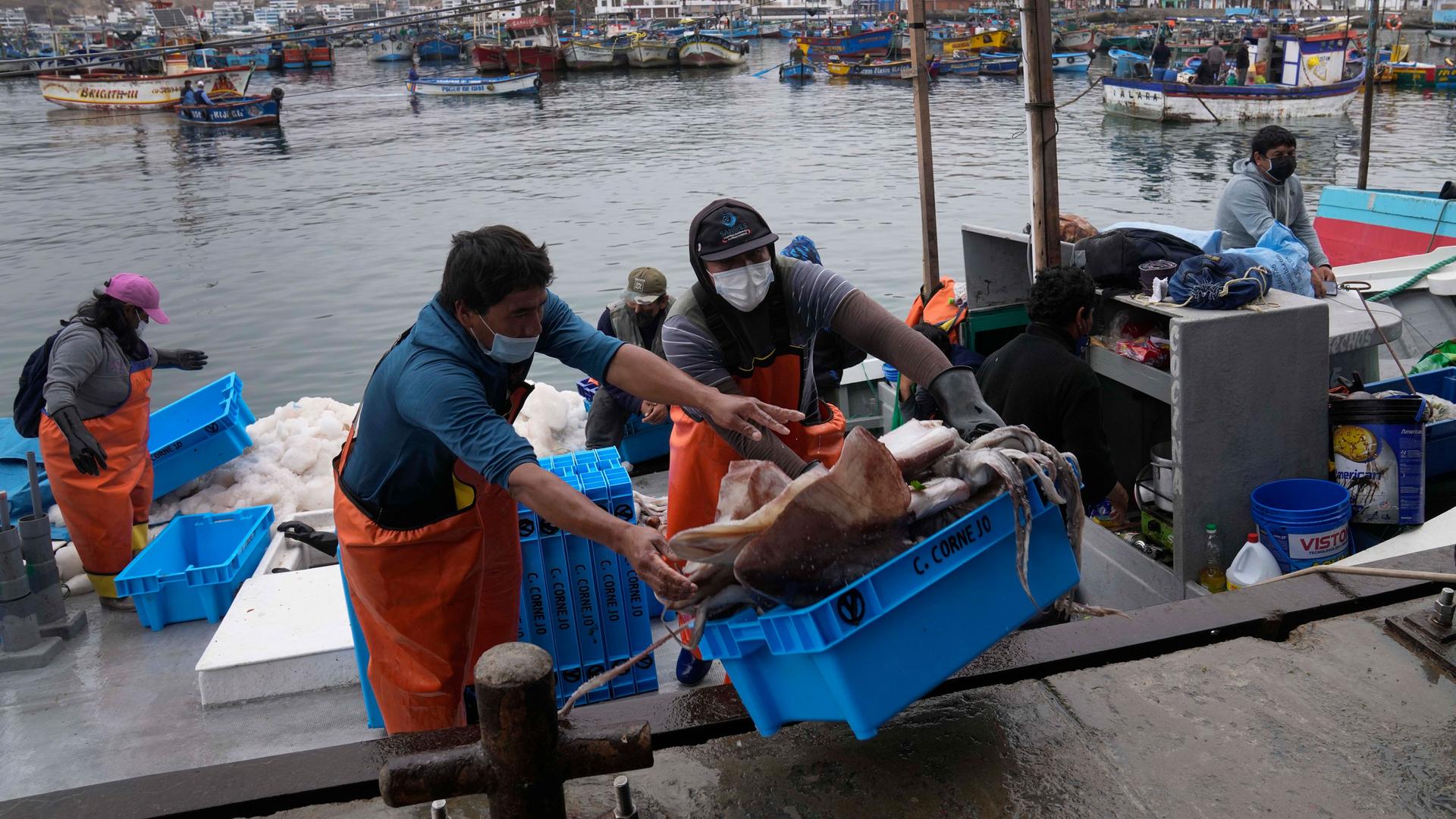A state-owned company from China is building a massive commercial port in Peru
Chancay is known as a sleepy fishing and farming town, about 50 miles north of Peru’s capital, Lima. It’s been popular with tourists and birds that migrate every year to and from North America.
But now, this little town of about 60,000 people is where a huge commercial port and industrial zone are being built.
The project was planned almost 10 years ago by the Peruvian government, as a way to boost exports and compete with other ports located on the Pacific coast of Latin America. But it wasn’t until recently, when a state-owned company from China decided to invest $3 billion, that it really took off.
Construction began last year and has already radically changed the area.
“We’ve seen a number of acquisitions of ports by Chinese companies in the past, but this is the largest that I know of in the Latin American region,” said Margaret Myers, the director of the Asia and Latin America Program at the Inter-American Dialogue, a think tank in Washington, DC.
The new megaport will become a key link between China and Latin America, Myers said.
“In the case of Peru, a lot of this trade would be in copper but also goods from wide ranging other countries, including potentially agricultural products from Brazil.
Myers said it would be critical for China to be able to transport goods that are important to China’s energy and food security.
The port in Peru is part of China’s “Belt and Road” project, a global infrastructure plan to boost China’s international trade routes. Chinese leader Xi Jinping launched the effort in 2013.
Myers said the political winds in Latin America are shifting in China’s favor.
“A lot of these countries are welcoming of Chinese engagement in the way of trade, and very much see China as a critical economic partner as they too aim to address what is a very difficult economic period.”
Peru’s new deep water port will have the capacity to serve the largest cargo ships in the world.
In a recent visit to Chancay, Peru’s President Pedro Castillo said the facility will help Peru’s economy and position the country as a major player in international trade.
“We need to bring technology and progress to our country,” he said.
The government said the project will generate 1,300 construction jobs, and 5,000 permanent jobs once it’s finished in 2024.
But people in the town of Chancay are not happy.
Miriam Arce is the president of the Association to Defend Housing and the Environment in Chancay port, a group that has been advocating to relocate the port.
She said Chancay’s residents are seeing their lives changed forever.
“Our beach, our coastline is now in the hands of private companies. We can’t enjoy them anymore.”
Arce used to listen to the sound of waves and seabirds. Now, she hears the sound of construction workers using demolitions to flatten the terrain where there used to be a hill. They also placed huge cement piles on the shore to contain the waves.
“Tourism is non-existent and fishing is not possible anymore,” she said.
Arce’s group is also asking the government to conduct an independent environmental impact study.
“The only study they did was paid for by the Chinese company,” Arce said.
Residents are getting the equivalent of $150 a month from the Chinese company. But that’s not enough to find a new place to live for the people who will likely be displaced.
She’s now organizing people to demand reparations.
“But we are David and they are Goliath,” she said. “The town of Chancay will never be the same.”
The World is an independent newsroom. We’re not funded by billionaires; instead, we rely on readers and listeners like you. As a listener, you’re a crucial part of our team and our global community. Your support is vital to running our nonprofit newsroom, and we can’t do this work without you. Will you support The World with a gift today? Donations made between now and Dec. 31 will be matched 1:1. Thanks for investing in our work!
